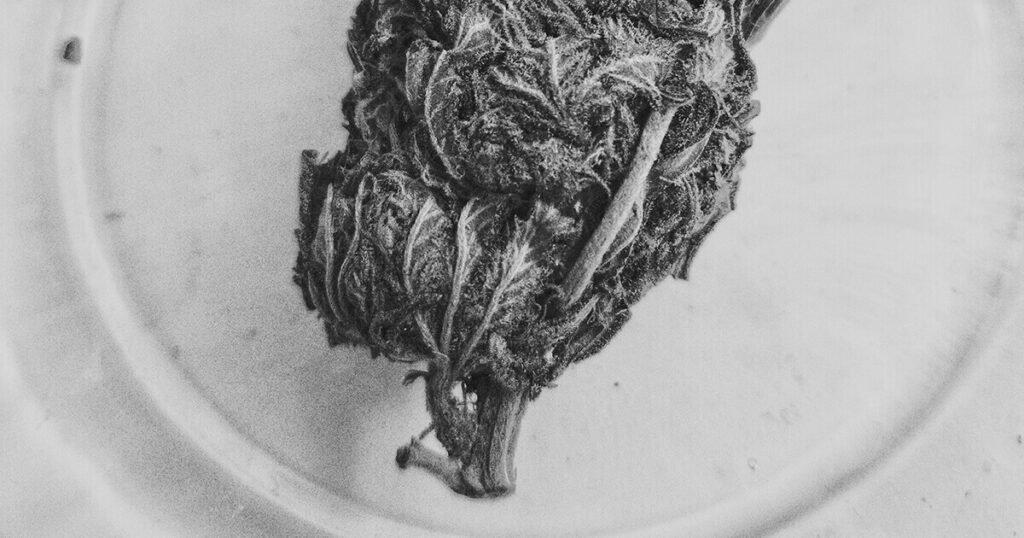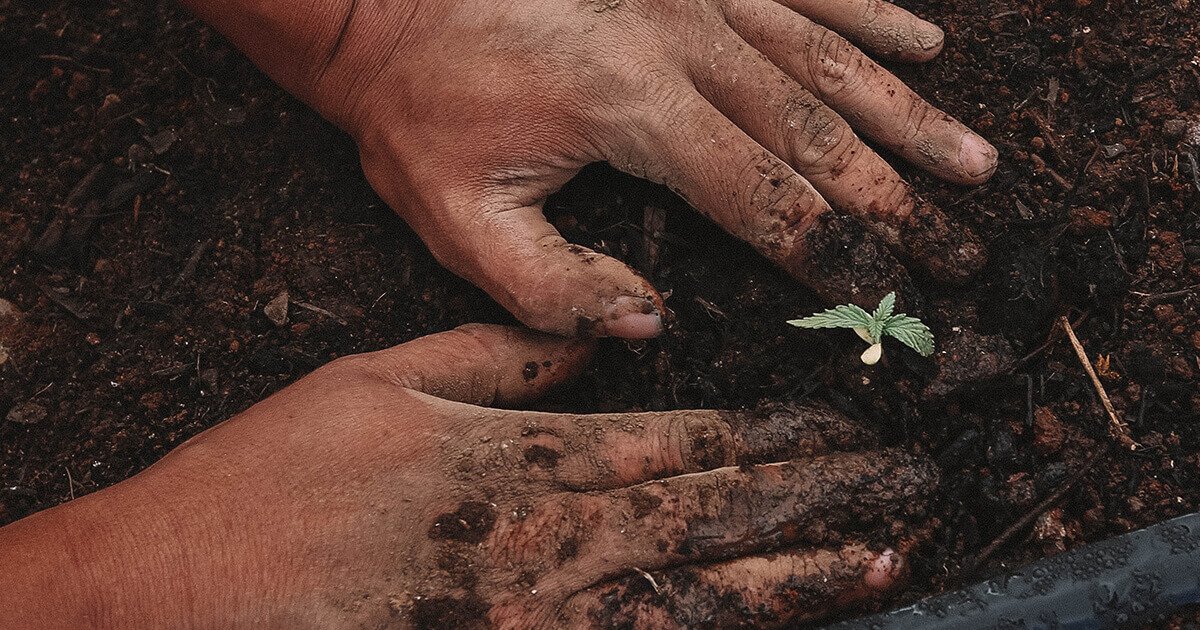Hemp has a long and prosperous history dating back to ancient civilizations. Archaeological evidence suggests that hemp was deeply ingrained in nearly every facet of human life.
Despite its beneficial impact on humans for thousands of years, hemp suddenly came under scrutiny in the 1900s for its botanical relationship to marijuana. It was banned throughout Europe and the U.S.A. and remained outlawed for nearly 100 years.
Today, most countries have lifted the ban on industrial hemp production. They recognize that hemp is different from its marijuana cousin and should never have been banned in the first place.
This legalization has prompted the scientific community to study hemp for its medicinal and therapeutic uses, particularly its CBD or cannabidiol compound that has proven results for reducing pain, inflammation, and anxiety.
Although the science shows overwhelming support of hemp use for healing, nutrition, and for sustainable manufacturing, most people are still unaware of its benefits to society.
And who can blame them? They’ve been duped into believing the opposite thanks to million dollar marketing tactics led by Big Oil and plastics industries.
With that kind of spending power, politicians aren’t inclined to launch a public awareness campaign anytime soon. Until they do, it’s up to the hemp producers and CBD merchants like ourselves to shed light on the history of hemp and its many benefits to society.
Hemp vs. marijuana

Hemp and marijuana are two different plants that belong to the Cannabis sativa species.
An easy way to think of it is to compare pitbulls and poodles. They’re both different breeds of the canine species and share similar anatomy, but they’re genetically different animals. The same is true of hemp and marijuana.
Marijuana is grown for its elevated THC (tetrahydrocannabinol) compound that gives users a euphoric “high.” It’s illegal in most countries but is commonly allowed for medicinal use, particularly in relieving symptoms of patients undergoing cancer treatment.
Hemp – or industrial hemp as it’s commonly called – is bred to remove all appreciable traces of THC. It may look similar to its marijuana cousin, but it doesn’t have any of its psychoactive properties. Hemp is non-intoxicating, doesn’t deliver any kind of “high”-inducing quality, and has zero adverse effects.
Countries that have legalized hemp production do so under stipulation that its THC content is less than 0.3% (with some requiring less than 0.2%).
Like THC is the major chemical compound found in marijuana, CBD (cannabidiol) is the dominant compound found in hemp. Hemp CBD is widely extracted for its therapeutic properties. Its healing effects are widely researched and proven to relieve all sorts of symptoms ranging from pain, to depression, and seizures.
Hemp’s ancient history
Hemp may be one of the earliest crops cultivated by mankind. It was found in use 50,000 years ago and its importance has been preserved in artifacts since 10,000 BCE. Beyond that, pollen grain fossils show possible evidence of hemp existing 150,000 years ago.
Other archaeological evidence suggests that the cannabis family of plants may have originated as far back as 145 million years ago in what is now Southeast Asia.
We start seeing evidence of widespread hemp use around 3,000 – 8,000 BCE in China. Hemp was cultivated to make clothes, shoes, medicine, rope, and paper – eventually replacing papyrus.
Hemp traveled west through India, Egypt, and the Middle East. Records point to hemp in Europe by around 800 BCE, but the first record of hemp use in North America doesn’t show up until the late 1500s CE.
History tells us that the Spanish brought hemp to North America around this time from Chile. However, we know that Native Americans were using wild hemp for hundreds, if not thousands, of years prior to the first foreign settlement.
Hemp’s modern history
The first colonists in Jamestown, Virginia discovered a native hemp strain that was growing wild near their settlement. It was believed to be superior to the European varieties, and King James I passed a law requiring colonists to grow both European and Native American strains.
This type of law became more commonplace as more colonies were established. Nearly everyone who owned a farm cultivated hemp. In fact, George Washington, John Adams, and Thomas Jefferson each grew hemp on their plantations.

Hemp permeated everyday life in European countries and the new British colonies. It was used to fashion textiles and clothing, canvas sails for sailboats, and strong, tensile rope for industry. It was also used in cooking! Pies baked with hemp flour and soups with hulled hemp seeds were nutritious as well as fashionable.
Hemp was a versatile and lucrative crop. Colonists considered it a “cash crop” and exported it to help fund the 1775 revolution for American independence.
It wasn’t until the second wave of industrial revolution in the mid-1800s that hemp’s cultural significance across the world began to wane thanks to new agricultural technologies.
Waning importance
During the 1800s and early 1900s, several historical events contributed to the decline in hemp production and a smear campaign intended to mislead the public.
Historically, hemp harvesting was a very labor intensive process and commonly farmed by slaves. As the U.S. and European countries abolished slavery, the cost to manufacture hemp increased to cover paid laborers.
At the same time, new agricultural innovations were sprouting up everywhere.
Eli Whitney’s 1793 Cotton Gin revolutionized the cotton industry by making it faster and cheaper to produce cotton textiles than hemp.
Hemp crops slowly transitioned to cotton fields as the Cotton Gin gained popularity.
The paper industry also undercut hemp with new paper-making machines using wood pulp. America’s expansion into mid- and western states sparked a new fixation on timber production.
In 1907, plastic was invented – spawning an infiltration of new plastic products into modern society. One such invention was nylon, a synthetic plastic fiber made by the DuPont Corporation.
DuPont also produced rayon textiles made from wood pulp and petroleum, sharing the timber industry’s enthusiasm for deforestation.
Then in 1919, like a beacon of hope, a hemp harvesting machine called a decorticator was invented that could process hemp faster and with fewer laborers. But the machine was complex to operate and never made it into mass production.
Hemp production would soon be thwarted by the titans of industry who invested in a new global economy built on timber, plastics, and oil.
An era of misinformation
While William Randolph Hearst invested in deforestation for his newspaper empire, and DuPont invested in new synthetic textiles, Henry Ford was experimenting with soybean and hemp-based biofuels for his cars.
The trouble is – he succeeded.
Ford’s biofuels had the potential to disrupt nearly every American and European industry which was run on oil.
John D. Rockefeller of the Standard Oil Company & Trust supplied America with 90% of its oil needs and was at risk of losing a fortune if Ford’s new fuels took off.
Hearst, DuPont, Rockefeller, and other industry lobbyists colluded in a smear campaign against hemp. Hearst used his newspapers to spread misinformation about hemp, painting it as a dangerous drug with racial and violent undertones.
Marketers also began conflating “hemp” with “marijuana,” creating the confusion that stands to this day.
The tycoons used their political influence to lobby Congress to put a stop to hemp production.

Andrew Mellon, the U.S. Secretary of the Treasury at the time, was heavily invested in DuPont, which would also lose a fortune if hemp were to replace plastic textiles.
Mellon appointed his son-in-law, Harry Anslinger, to head a new bureau of narcotics. Anslinger wrote the “U.S. Marihuana Tax Act” which would levy a hefty tax on hemp growers.
The “Marihuana Tax Act” was passed in 1937 – essentially snubbing hemp from having any place in modern society.
Similar legislation swept across much of Europe where hemp was eventually designated a narcotic.
Lifting the ban
Today, many countries and states have lifted the decades-old ban on industrial hemp and recognize that it never should have been banned in the first place.
Hemp business is once again growing. Scientists have already discovered how to extract hemp’s CBD compound for medicinal and therapeutic uses. They have even proven CBD’s ability to shrink tumors and kill cancer cells!
At the same time, hemp producers are innovating clever ways to reduce mankind’s dependence on oil, plastics, and other environmentally harmful products.
Hemp’s durability and flexibility lends itself to replacing everyday objects like cars, furniture, and construction materials.
Hemp is, after all, one of the most sustainable crops on earth. It can grow from seed to full height within 3 months. It uses minimal water and zero or limited pesticides.
Hemp is also a bioaccumulator – meaning it cleans the soil of heavy metals and other contaminants while it grows. Plus, hemp products are organic and compostable.
Hemp’s versatility and sustainability seem obvious, and yet pushing it to a more prominent place in our lives will require public education campaigns and corporate investments.
Once the public is aware of hemp’s many benefits, they’ll be able to push for environmental policy change and for funding of medicinal hemp research.
If one plant can save the world from the mistakes of our past and present, it’s time to embrace it for the miracle crop it is.










